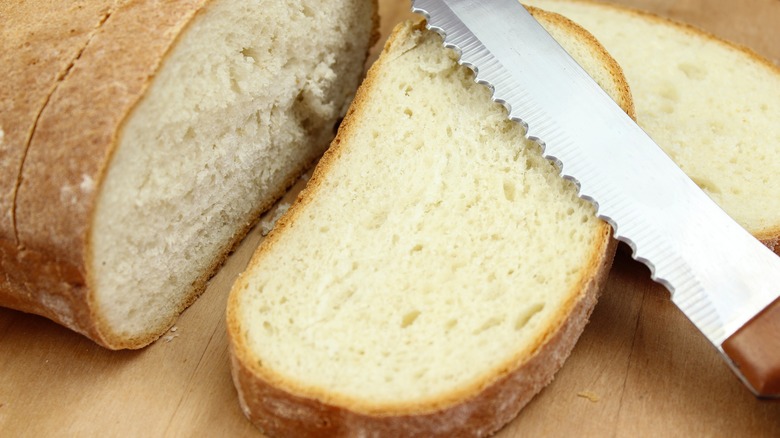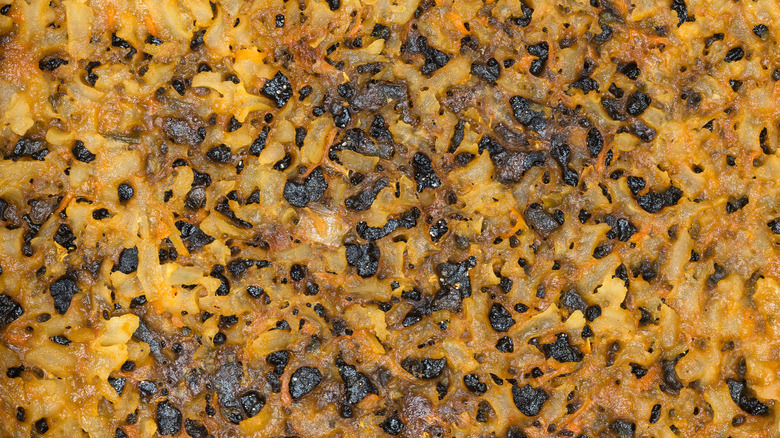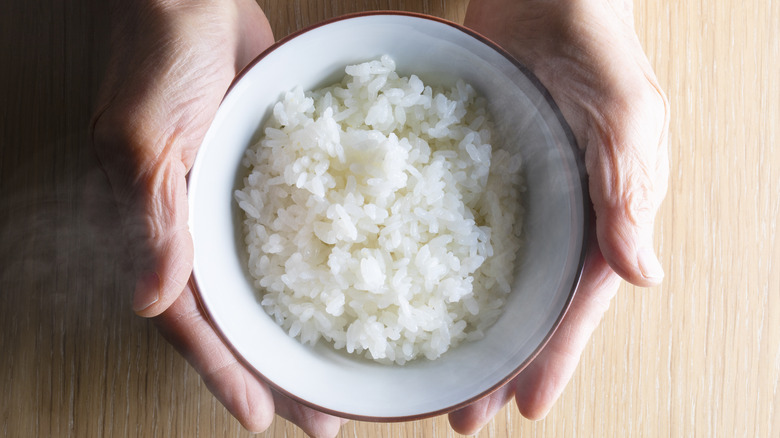How A Piece Of Bread Can Take The Burnt Flavors Out Of Rice
Making "boo-boos" in the kitchen, as Julia Child adorably called them, is a frustrating but essential part of becoming a good cook. Mistakes are inevitable, but learning how to work with them or figuring out how to correct them makes you a better cook. While that's probably true for most things in life, unfortunately, some cooking mishaps are more forgiving than others.
When it comes to rice, a seemingly simple dish made by 3.5 billion people globally, a few factors influence whether the grains end up hard, mushy, gummy, or burnt. When you lift the lid, the first three can be a disappointing surprise, but burnt rice announces itself beforehand, with an unmistakable smell that permeates the kitchen and can flavor all the rice in the pot.
Unlike burnt garlic, which has a bitter, unpalatable taste (even if it's cooked three seconds too long), there is a chance to salvage a pot of burnt rice. Just grab a slice of white bread, pour a glass of wine, and wait as the bread does all the hard work and absorbs the burnt flavor and smell.
Saving rice with bread
We're not going to sugarcoat it. This is a Hail Mary pass, a last-ditch effort, a do-or-die attempt when you don't have time to make more rice. Instead of going without a starch, remove the pot from the heat source, take a piece of white bread or split open a sandwich roll, and place it on the surface of the cooked rice. Close the lid and let it rest.
After 10 minutes, the bread should absorb the burnt flavor and smell from the pot and save the cooked rice above the burnt layer. Discard the soggy bread and carefully scoop out all the unburnt rice. It's important to avoid mixing the good rice with the burnt grains since the bread isn't a miracle worker and can't resurrect charred rice (or save you from scrubbing the pot). Fluff the remaining rice with a fork, season, and reflect on what went wrong while you soak the pot.
Rice burns when there isn't enough water in the pot. Two factors can affect that — cooking at too high a temperature and not starting with the correct rice-to-water ratio.
How to cook rice
The texture of rice can be affected by the water-to-rice ratio, cooking method, temperature, whether you stirred it while cooking, and whether you rinsed the grains beforehand. Long-grain white rice generally needs two parts water to one part rice. Still, the cooking method will vary the amount of water necessary since rice cookers often require less. Ratios also differ between manufacturers, so it's best to refer to the brand's packaging to get it right.
Once the rice has been measured, all varieties should be washed to remove dirt and excess starch from the grain's exterior, regardless of your cooking method. This step prevents the rice from becoming gummy. If you are using the classic stove-top method, bring the ingredients to a boil, cover, and lower the heat to simmer until the water evaporates.
Unless you are cooking with Arborio or another medium-grain variety, do not stir rice while it's cooking. Rice is delicate as it rehydrates and easily breaks, leading to uneven cooking. Lifting the lid also allows trapped steam to escape, which could be why the rice is burnt or hard.
If burnt rice is typical, you may want to invest in a rice cooker with an auto-shut-off feature or cook the rice like pasta. The pasta method is excellent when you need to make a large batch or are unsure of the correct water-to-rice ratio. Just boil the rice in plenty of water and strain the grains when al dente.



